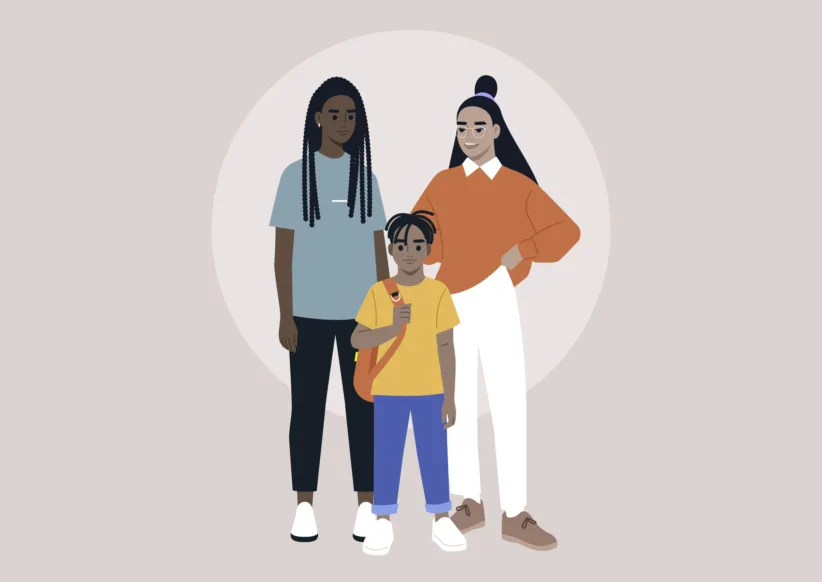There’s nothing quite like seeing that smile spread across your little one’s face when they realize they’re making music with the maracas in their hand, or when they’re dancing to their favorite song. It’s magic when you bring music and kids together, but surprisingly it is also science. Research has shown that participating in music stimulates multiple portions of the brain even during infancy, helping babies recognize patterns, boosting language, memory and concentration skills, and aiding “Music is enjoyed by all ages and in developing fine motor skills. At it’s something you can start doing any age, playing or listening to music from birth,” says Marni Konner of introduces kids to instruments and the Little Maestros, a music program sounds from around the world and for infants and toddlers that features gives children a way to express them- a full band, puppet shows and story selves. For older kids, commanding an time. Konner says she sees babies in instrument builds a sense of self and her class “responding all the time accomplishment. All this, and it’s fun! with wiggles and smiles and fullbody movements.”
At Diller-Quaile School of Music, infants start training their inner musician between the ages of 4 to 8 months old by being rocked and bounced by their caregiver in classes where participants sing along with live improvised piano. “By having experiences with an adult, children’s ears become even more in tune to concepts such as high and low, fast and slow, and changes in tone,” says Erin Langston, the head of the Early Childhood Program at Diller- Quaile. “Infants are sponges, and the way they relate to the world, the way they develop all of their skills, they are relating mostly to sound.”
At 6 months, a child’s hand-eye coordination develops, and they can begin to grasp and manipulate objects, like shaking instruments. They also begin to understand cause and effect. “They can appreciate that this makes a sound, and around this age they can begin clapping in response to music,” explains Konner.
Kathy Yiannoudes, the head of Instrumental and Vocal department at Diller-Quaile, suggests having a basket of tiny instruments at home, like drums with mallets and easy-to-grip shakers for spontaneous play. Parents can also use the instrument we all have, our voice, to make music a part of a child’s daily routine—making up songs for difficult
transitions like clean-up time, getting out the door, or winding down
for bedtime.
When
kids begin to walk on their own is a great time to explore motion
through music—and in fact dancing is an important part of music
education. “We are kinesthetic, we need to feel it in our bodies,” says
Deanna deCampos, director of Eastside Westside Music Together.
In Diller-Quaile’s toddler
classes children learn measures with their own feet. “They can walk to
the music,” Langston explains. “And then they can run, they can feel
that quarter note, and then they can run twice as fast which is a 4/16th
note. Once you provide that physically, that sets children up for
reading music, for learning music, for playing music.”
When children begin
vocalizing, all of the singing they’ve heard and the dancing they’ve
done thus far starts gelling in their brains, and they start singing and
improvising songs to express themselves. As deCampos explains, “First
we hear single notes, then we hear pairs of notes, then we hear little
bits at the ends of songs. You know how at a birthday party, you hear
the very young kids singing ‘tooo youu’? They take in the ends of the
phrases and just like language they build on that over time.”
For parents who are
wondering when might be the right time to introduce their child to
playing an instrument, the rule of thumb is generally 5 or 6 at the
earliest—though sometimes children as young as 3 and 4 might begin
instrument lessons. Smaller versions can be made of string instruments
like violins and cellos for 5-year-old hands, and by 6, many kids can
handle the keys on a piano.
In terms of committing to an instrument and moving
full force ahead with it, each child is different, but age 8 or 9 is
generally a good age to do so. At 8 or 9, a child can start reading
music as part of their study. Yiannoudes advises parents to look for a
program that involves individual, group and performance opportunities.
“Playing with other people is a social experience. You learn about
yourself, and it’s inspiring to have peers,” she notes. You should also
make sure a program is responsive to a child’s development, so they can
have an age-appropriate experience. Parents should feel comfortable
communicating with their child’s instructor to help guide their children
through their practice routines. Helping your child designate a
specific practice place and time at home helps.
But don’t worry if things
don’t always go smoothly. Sometimes “I want to quit” simply means “I’m
frustrated,” as children are advancing and taking on new challenges they
didn’t expect. Talk to your child and find out what their motivations
are behind wanting to walk away from an instrument. In the end, whether
music becomes a formal or informal part of your child’s life, it will no
doubt have a lasting impact. “Who we are is so much about our own
creativity, and music is indeed the universal language,” sums up
Langston. “Everybody enjoys music; it’s really so much of what makes us
human.”
A
Music School For The Gifted
Parents of children who are
musically gifted, and who are interested in making music a serious part
of their child’s education, should consider applying to the Special
Music School (P.S. 859). A public school for children from grades K–8,
the school is the only one of its kind in the city and represents a
special partnership between the New York City Department of Education
and the Kaufman Center. The curriculum combines regular academic classes
with unusually rigorous musical training—it’s modeled on the innovative
music schools of the former Soviet Union. Admission is based on
auditions, and students from all fi ve boroughs are eligible to apply.
For more info about the school, visit kaufman-center.org.





















